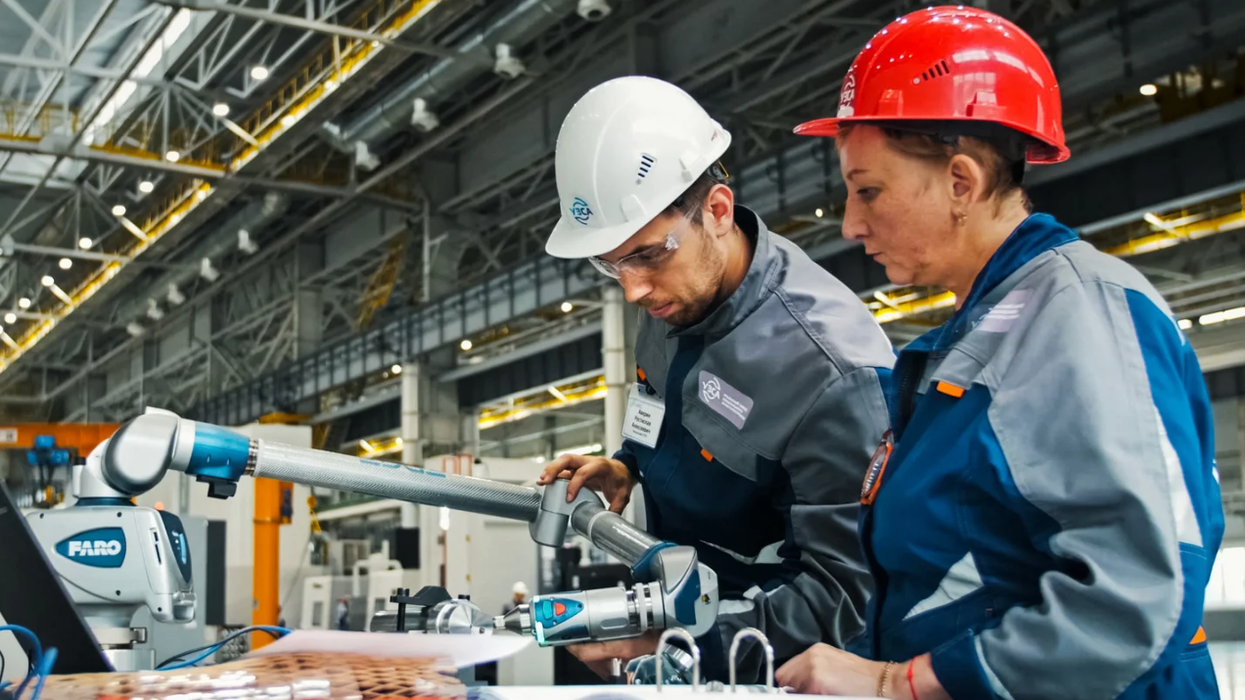Ford CEO Jim Farley noticed a problem at the car manufacturing company when he sat down to negotiate new terms and contracts with the union leaders. According to his veteran staff and the demographics of his employee roster, he was told “young people don’t want to work here.” So did he try to make Ford more appealing with snacks or a more youth-oriented, fun-focused work environment? No. He decided to go old school and copy a method done by founder Henry Ford himself back in 1914: give the young workers raises.
“The older workers who’d been at the company said, ‘None of the young people want to work here. Jim, you pay $17 an hour, and they are so stressed,’” Farley said to Walter Isaacson in an interview. In the conversation with longtime workers, he found out that many of his younger temps and newer staff were struggling to make ends meet, with some of them working eight-hour-long shifts at Amazon before clocking in to work their seven hour shifts at Ford each day. After finding out these workers were getting only three to four hours of sleep per night, Farley knew something had to change.
- YouTube youtube.com
Farley made those young temporary workers into full-time employees, immediately making them eligible for raises, better health coverage, and participation in Ford’s profit sharing program. He also coordinated with the United Auto Workers Union to arrange that temporary workers could become full-time employees after only two years of continuous employment at Ford.
“It wasn’t easy to do,” Farley said. “It was expensive. But I think that’s the kind of changes we need to make in our country.”
Farley credits his decision to offer his workers better money and overall benefits on the company’s founder, Henry Ford. In 1914, Ford’s company was experiencing high consumer demand and success with the assembly line, but incredibly low work satisfaction and morale among his employees. Ford decided the best way to motivate and retain his employees was to give them five dollars per day, which was double their usual pay rate. This wasn’t out of altruism or the goodness of Ford’s heart, but a business move that not only kept his best employees from leaving, but also providing enough money for his employees to buy Ford branded cars themselves, essentially getting the money he was giving right back to the Ford company. Farley’s move to boost the pay and benefits of his employees was based on the mindset that taking care of employees overall helped the company grow by securing quality workers away from competitors through sharing in the company's success.
@dougiesharpe Henry Ford once wanted to take Ford's massive profits and reinvest them into the Ford Motor Company by raising employees wages and building cheaper cars. He was sued by Ford Motors stock holders who claimed a corporations sole purpose is to generate profits for the stock holders not improve the lives of the workers or public. #henryford #ford #fordmotorcompany #dodge #dodgemotorcompany #wages #wageincrease #wealthdistribution #ceopay #interestingfacts #interestingfactsforyou #amazingfacts #amazingfactsministries #randomfacts #randomfactstiktok #randomfactsforyou #coolfacts #coolfactsyoudidntknow #coolfactz #coolfactsforu #fact #facts #factsdaily #factsyoudidntknow #factz #factsoftheday #factsontiktok #funfacts #funfactstoknow #funfactsyoudidntknow #funfactsoftiktok
Three million eight hundred thousand manufacturing jobs are projected to be available in the U.S. by 2033 as current workers will reach retirement age. On top of that, manufacturing jobs should become more prominent in the country in part due to proposed tariffs. With these projections on the horizon, industry leaders such as Farley recognize they will need to offer sustainable living wages and perks to incoming employees in order to replenish their workforce and attract new ones.
Luckily (and in part due to this shift back to manufacturing), more members of Gen Z are investing their education in trade schools and apprenticeship programs rather than colleges or universities. While people with college degrees are still initially paid more than people without one, Gen Z is noticing that there is more stability in the trades in the current economy. Along with that, according to the National Center for Education Statistics, the cost of college tuition, fees, and room and board increased by 155% between 1980 and 2023, making higher education look less and less appealing to an incoming workforce that either cannot afford it or don’t want to contribute to the $1.777 trillion of student loan debt in the United States.
@rogerselectric Gen-Zers are being told that college is the only way to a successful life. We are here to prove that untrue. Did you know that 80% of skilled trade workers are happy with their career choice? ⚡️ #skilledtrades #trades #gen-z #electricians #electricianslife #electricianstuff #electriciansdoitbetter #electriciansoftiktok
This goes to show that, sometimes, what’s old becomes new again. Employers and employees can work well together by mutually seeing the worth of the work and providing appropriate compensation for it to boot.



















 Gif of Bryan CRanston being angry via
Gif of Bryan CRanston being angry via 



